|
When was the last time you watched a film with an unforced smile on your face from start to finish? For me, it was last week, when I sat down for Second Run’s Blu-ray release of Three Wishes for Cinderella [Tri orísky pro Popelku], a hugely popular 1973 Czech film adaptation of author Božena Němcová’s interpretation of this enduring folk tale, adapted by Marketa Lazarová co-screenwriter František Pavlícek (writing here as Bohumila Zelenková) and directed by Václav Vorlíček.
The film opens on a wide shot showing busy activity in the square of a Czech village at an unspecified period of history, accompanied by the melodically tinkly strains of Karel Svoboda’s marvellous score, and in a matter of seconds I just knew I was in for an entertaining ride. My suspicions were confirmed during the immediately following opening titles, as cast and crew names are overlaid on a series of perfectly timed and often telling freeze frames that introduce us to some of the main characters on the fly. Preparations for an important event are clearly underway, which we soon learn is an impending visit from the King. Bossily overseeing it all is the village matriarch, who for the sake of the story is known only as Stepmother (Carola Braunbock), a cheerless woman who clearly regards the rest of the villagers as her social inferior, save for her daughter Dora (Daniela Hlaváčová), who appears to be almost as insufferable as her mother. Constantly in their shadow is Dora’s stepsister, Cinderella (Libuše Šafránková), whom the stepmother reluctantly agreed to take in after the death of Cinderella’s father and whom she treats like a slave and relentlessly belittles. Although understandably unhappy with her lot, the defiant Cinderella continues to derive pleasure from the smallest things in life and appears to have an almost Dr. Doolittle relationship with the animal kingdom. She waves merrily at a small flock of doves that nest above the village square, interrogates an inquisitive dog that tries to follow her, and asks questions of an owl named Rosalie, who guards items given to Cinderella by her birth mother that she keeps secreted in the loft of the barn in which Rosalie has made her home.
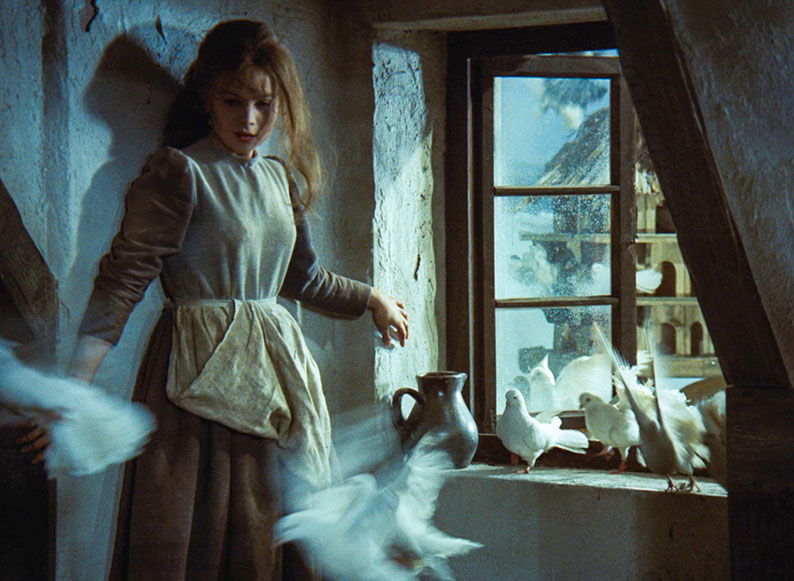
When the Stepmother makes moves to whip the Kitchen Boy (Jiří Růžička) for breaking one of her dishes, the kind-hearted Cinderella rushes over and takes the blame for the accident instead. When she then stands up to her guardian in defence of her father’s memory, the Stepmother responds by pouring lentils into the bucket of cinders and ordering her to separate them out and then ask for forgiveness. She also bans her from attending the King’s procession, not that this particularly bothers Cinderella, who is more interested in taking her treasured horse Yurashek out for a ride, which her Stepmother has also forbidden, of course. As the preparations for the royal visit continue, Cinderella glumly turns her attention to the monumental task of separating the seeds from the cinders, only for the town square doves whom she waved at earlier to fly in to the room and carry out the task for her, freeing her to ride off happily into the woods on Yurashek’s back. Seriously, if this sequence doesn’t put the widest of delighted smiles on your face, I don’t know what will.
As the villagers prepare for the King’s imminent arrival, I did wonder what possible reason this royal personage could have for journeying to such a small hamlet, but the brevity of his visit and the fact that his castle is located nearby suggests that this was one of several such stops that he made that day on a quick round trip of the local district to show his face to his people. As his carriage and its sizeable entourage passes through the village gates, the King (Rolf Hoppe) asks his son’s tutor (Jan Libíček) where the Prince (Pavel Trávníček) and his aides, Karel (Vítězslav Jandák) and Vitek (Jaroslav Drbohlav), could have gotten to. The tutor reveals that he was lecturing the three young men on good manners when they disappeared into the woods, news that clearly amuses the Queen (Karin Lesch) but prompts the King to demand that they be quickly found and reprimanded. He’s getting getting fed up with his son’s carefree ways and is keen that he should be married, a prospect that clearly does not interest the Prince.
It’s quickly revealed that the Prince and his aides have sneaked off into the local forest to go hunting with their crossbows, a pastime that Cinderella and her late father also once enjoyed. Given that both the Prince and Cinderella have abandoned their duties to have fun in the same stretch of woodland, it should come as no surprise when their paths quickly cross. When Cinderella spots the Prince and his aides, she dismounts and secretly follows them, and when the Prince takes aim at an unwary deer, she spoils his shot by throwing a snowball at his head. Surprisingly, the Prince is more amused than annoyed by this jape, but when Cinderella cheerfully runs away, he and his aides give immediate chase, eventually cornering her and foolishly mistaking her for a passive and easily conquered young maiden. The spirited Cinderella responds to their condescending mockery by riding off on the Prince’s unruly horse, which in the spirit of her relationship with animal kingdom passively accepts this new rider without a whinny of fuss. On reaching the spot at which she left Yurashek, she switches horses and gallops away, leaving the Prince to admiringly wonder who this feisty girl who was able to so easily best him could possibly be.
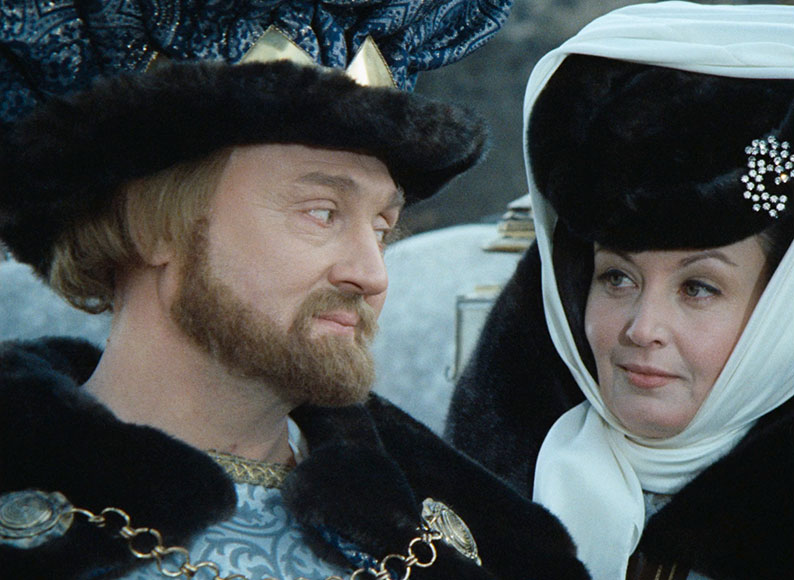
Back in the village, the Stepmother attempts to ingratiate herself with the King, and somehow blags an invitation for herself and Dora to attend an upcoming ball that the King has arranged so that his son can select a wife from the eligible female guests. In order that they may be suitably dressed for the occasion, the Stepmother sends Vincek (Vladimír Menšík), her middle-aged handyman and the nearest Cinderella has to a friend, into town to buy the appropriate dressmaking materials. Shortly into his journey, Vincek spots Cinderella washing clothes in the icy water of a nearby river. When she reveals that she is saddened at not bring able to attend the royal ball, Vincek tries to cheer her by promising to bring her a present back from town. Later, whilst dozing in his carriage on his way back to the village, he’s sharply woken when a bird’s nest lands squarely in his lap, having been shot from its perch by the Prince for shits and giggles whilst he was out hunting again with his aides. When Vincek examines the nest, he finds a sprig of three hazelnuts, and having forgotten to buy her a present in town as he promised, he gives these to the delighted Cinderella instead. Only when she takes them to her hiding place in the barn does she discover that they each have the power to grant her a single wish…
There can be few – if any – reading this who have not seen or read a version of the Cinderella story, or at least be aware of its principle characters and plot. According to its Wikipedia page, there are 69 variants of this ancient folk tale, the earliest of which is generally agreed to be Rhodopis, which was first recounted sometime between 7 BC and AD 23 by Greek geographer Strabo. The most famous of the many versions of the story that later emerged are La gatta Cenerentola by Giambattista Basile (first published in 1634), the hugely influential Cendrillon ou la petite pantoufle de verre (1697) by Charles Perrault, and the considerably darker and more graphically violent Aschenputtel (1812) by the Brothers Grimm, which happens to be my favourite. Three Wishes for Cinderella cites as its source the O Popelce by Božena Němcová, a popular Bohemian variation of the tale, albeit one that that was based on an earlier folk tale titled The Widower and his Daughter. Many of the key aspects of the story as it’s commonly known in the West are certainly present here, but other elements have simply been dispensed with or have been given a different and more interesting slant. The unnamed Stepmother certainly fits the bill in her cruel treatment of Cinderella and her far more favourable attitude to her own flesh and blood, with her daughter Dora being a singular take on Cinderella’s traditional two vain and heartless stepsisters.
I’ve never been comfortable with the notion of Cinderella’s beauty being indicative of her pureness of heart, while her stepsisters are deemed to be bad in part because they are ugly, a shallow and judgemental ‘looks defines character’ trait that you’ll find and more Hollywood movies than I could care to count. It’s thus rather pleasing to be presented with a stepsister whose ugliness is confined to her unpleasant personality, one that we can assumed was primarily shaped by her overbearing mother. A case could certainly be made that the film is still visually judging Dora and her mother by portraying them as plump when compared to the slender Cinderella, but this tells its own story about how the latter is treated in a household where the Stepmother and her daughter gorge on food that Cinderella probably has to make do with the scraps from. Prince Charming (which has to be one of the most unimaginatively on-the-nose bits of naming in fairytale history) here is simply the Prince, but disarmingly charming he proves to be, a royal rebel who has no interest in being married off or ruling the kingdom and who prefers instead to have fun hunting with his two cheerful aides, whom he treats as equals and appears to be close friends with. My engagement with him did falter in the scene in which he successfully hunts and kills a fox, an activity that I was once again itching to see sabotaged by Cinderella, whose friendly engagement with the animal kingdom is also a little at odds when she cheerfully demonstrates her skill at shooting down a bird in flight.
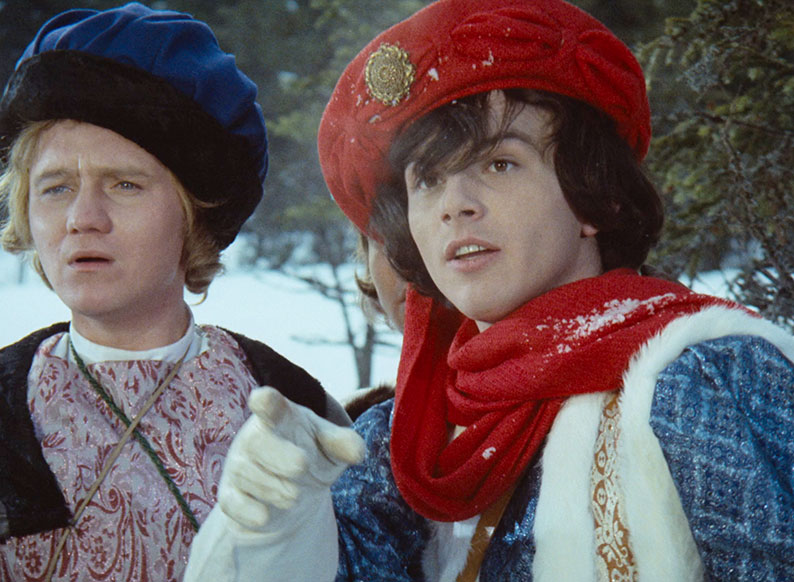
The film is markedly different in tone to other, more fairytale-driven cinematic adaptations (I’m looking specifically at you, Mr. Disney), with director Vorlícek grounding the characters and story in a tangible reality, which brings a level of grit to a tale whose few magical elements are handled with a pleasingly low-key economy. But the most revolutionary element, and the one that makes the film feel even more relevant today, is the titular Cinderella. Defiant, determined and upbeat in the face of her stepmother’s relentless dislike and mistreatment, she’s also fiercely independent, toying with the Prince for her own amusement when they first cross paths, then again when the first of the three magic hazelnuts enables her to masquerade as a young Robin Hood-like male archer, a guise in which she easily out-skills the Prince at his own game. When her second wish grants her a costume and feature-shielding veil for the Royal Ball and her entrance grabs the attention of everyone present, it’s not she but the Prince who is dizzily bewitched, dancing dreamily with her and suddenly all enthused by the prospect of marriage. As Dora and her mother jealously observe this mysterious woman that everyone present has assumed is a princess, Cinderella remains in full control of the situation, enjoying the attention and the effect that she is having on the Prince whilst slyly deflecting his every advance. She then unceremoniously departs after setting him a riddle that he must solve before she will seriously consider his proposal, effectively a test of his intellect that the dopey bugger is initially bemused by, despite all of the information that he needs to correctly answer it being in front of his royal nose. A brief stumble as she descends the castle steps results in Cinderella losing the slipper that the Prince in all modern versions of the tale will use to find the woman who has won his heart. That said, the process of locating her is seriously scaled down here from the kingdom-wide hunt of the Perrault version, with the Prince and his aides instead chasing Cinderella to her village, where they are immediately challenged by the local populace, who do not recognise the Prince and laughingly mock his claim that he is chasing a beautiful princess.
No plot summary, no matter how detailed and colourfully annotated, could fully convey what makes Three Wishes for Cinderella such an unwaveringly joyous watch. František Pavlíček’s screenplay is briskly structured, consistently witty and pleasingly progressive, and Václav Vorlíček’s direction, Karel Svoboda’s score, and a string of delightful performances bring an exuberance and energy to the material that for my money lifts it above any other cinematic interpretation of the Cinderella story that comes readily to mind. The innately upbeat tone and Vorlíček’s lightness of touch ensures that even theoretically downbeat moments are infused with an air of optimism for events that tradition assures us are soon to come. The fantasy elements are kept to a minimum, and the comic moments are enjoyably playful and character driven – had the film been remade in the UK at the time I’m convinced that the Prince’s hapless Tutor would have been played by Roy Kinnear, while the headdress worn by the Stepmother to the Royal Ball has the look of something a flamboyant Batman might don to look fashionable on a snowy day. The cast is a delight, but special mention must go to then young newcomer Libuše Šafránková, who is genuinely radiant as the self-confidently resolute Cinderella, bewitching to the Prince as much for her guile and her ability to outwit him as for her youthful beauty. Every element here pulls together harmoniously to captivating effect, and the film as a whole, in its pleasingly grounded way, is every bit as magical as the enchanted hazelnuts that transform the downtrodden but resolute Cinderella’s fate.
Three Wishes for Cinderella was previously released in the UK on DVD back in December of 2016, also by Second Run, an edition that I must confess to have never seen, so I’m not in a position to make comparisons with this new Blu-ray edition. We are informed that the transfer on this disc was sourced from a 4K restoration created by the Czech National Film Archive, and the film is fronted here by this intriguing message:
The goal of this digital restoration was to be able to present the film in such a way, so that it could be seen and heard as an audience would have experienced it at the time it was released in 1973. As a result, various features that originated from the shooting of the film or its laboratory processing have been preserved and are representative of the technologies and creative approaches of the time.
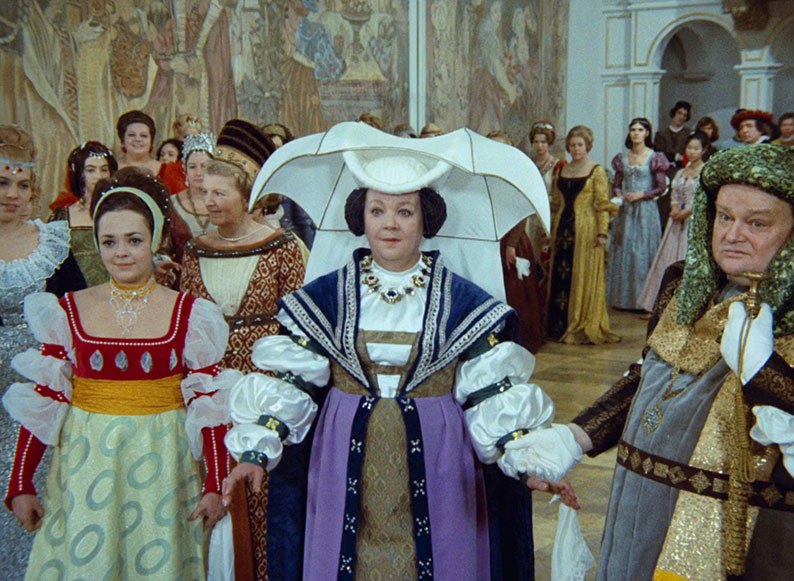
While I can’t say for sure, to me the inference is that, unlike some other restorations I could name, the team responsible has not messed with the picture, tweaked its effects, or otherwise enhanced the sound or image in any way. If that’s the case, then hooray for the good people at the Czech National Film Archive, as the impressive results of their endeavours really speak for themselves. The 1080p transfer, which is in the film’s original aspect ratio of 1.37:1, is absolutely top-notch, with sharply defined detail, pleasingly graded contrast, and a sometimes earthy, often attractive and sometimes vibrant pastel-leaning colour palette that really shines on the more brightly toned costumes of the villagers and (especialyl) the royal court. A very small number of blips of remaining wear and minor damage aside, the picture is clean and stable in frame, and a very fine film grain is visible.
The original mono soundtrack is presented here as Linear PCM 2.0, and while the tonal range is not as wide as the Dolby tracks that soon to come, the dialogue and sound effects are clearly reproduced and the music always sounds good. There’s also no trace of background hiss or other signs of wear or damage.
The optional English subtitles are activated by default.
An Appreciation by Michael Brooke (37:27)
Learned Czech cinema afficionado and expert Michael Brooke delivers a densely packed examination of Three Wishes for Cinderella and the Czech fairy tale film – or Pohádky – tracing its history and examining the worldwide evolution of the Cinderella story. He talks about the international and (particularly) domestic popularity of the film, explains why screenwriter František Pavlícek is credited as Bohumila Zelenková, reveals the influence of the painting The Hunters in the Snow by Bruegel the Elder on the look of certain scenes, and discusses the work of several members of the Czech and German cast. Locations are identified, the progressive feminist element is discussed in the context of the film’s year and country of origin, and when commenting on the real-world grounding of the story here, Brooke cannily suggests that it is closer to Ken Loach than Walt Disney. I’m just scratching the surface of this excellent essay, from which I learned a great deal.
Cinderella (Popelka, 1929) (46:49)
An early Czech silent film version of the classic tale, directed by Josef Kokeisl and starring Zdena Listová as Cinderella, Milka Bálek-Brodská as her stepmother, Vendelín Buk as her father, Ziňa Zimová-Lipkovská and Olga Frimová as her stepsisters Dora and Barča, and Roman Roda-Ruzicka as Prince Zlatohlav. Although scenes do occasionally plod a little (Prince Zlatohlav really likes fondling and kissing Cinderella’s lost slipper) and it clearly did not have the biggest of budgets, it nonetheless combines elements from different takes on the story to interesting effect. Here, Cinderella’s dowdy clothing is transformed into a beautiful dress for the ball not by a visit from her Fairy Godmother, but because of an act of kindness to a hungry old woman who turns out to have the power to grant her deepest wish. Quite when this take on the story is supposed to be set also intrigues, as what looks like period clothing seems at odds with the (then) modern-day house in which Cinderella’s family appear to live, which initially gives the story an almost kitchen-sink air of social realism. Later, as the search for the owner of the slipper gets under way, the film draws on the Brothers Grimm tale on the tale in the efforts of the stepmother to shape her daughters’ feet to fit the undersized footwear. It may not get as grisly as the source material (where one sister cuts off her toes and the other carves off part of her heel), but the mother’s attempts to crush Dora and Barča’s feet down to size with a fruit press and a rolling pin are still wince-inducing and go on for long enough to suggest that director Josef Kokeisl had a slightly sadistic streak.
A Little Shoe (Střevíček, 1937) (5:13)
A short animated Czech film by Jiří Fridrich that picks up the Cinderella tale as the title character flees from the ball and loses her slipper, prompting a countrywide hunt on the part of the Prince for its wearer. It boasts a charmingly quaint animation and an orchestral score that would not be out of place on a Hal Roach film of the period, and go into it unprepared and you’re likely to get a start when it turns out to be an ad for the Kráska shoe shop in Lucerna. “A modern enterprise” with “37 years of tradition,” no less.
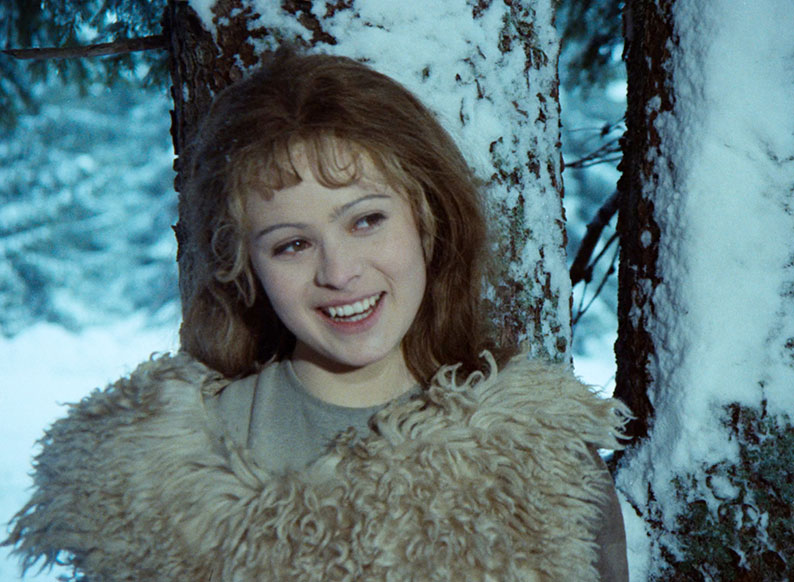
There are two Trailers featured here. The Original theatrical trailer (2:37) is constructed from a series of silent clips from the film set to a song that graces the soundtrack during Cinderella’s approach to, and departure from, the Royal Ball. Hardly the most inspiring sell, it fails to capture even the essence of makes the film such a pleasurable watch. The Restoration trailer (1:33) includes dialogue, is better edited, and frankly does a more convincing job of promoting the film.
Also included with the Blu-ray is a Booklet containing a fascinating essay by author and critic Tim Lucas, who examines the history of the Cinderella story, and usefully provides a detailed (and I do mean detailed) summary of the folk tale The Widower and his Daughter, which was reworked by Božena Němcová for O Popelce, the story on which Three Wishes for Cinderella is based. This allows those of us who have never read either of these source stories to make our own comparisons between the film and the tales that inspired it. The main credits for the feature are also present.
If you’re looking for a fairytale to brighten your Christmas, one that kicks against gender stereotypes and the Disneyfication of this ancient folk tale and that is an uplifting delight to watch from start to finish, than Three Wishes for Cinderella should be at the top of your viewing list. It’s easy to see why the film’s initial popularity continues to endure, and the presentation on Second Run’s Blu-ray is exemplary, as are the contributions of Michael Brooke and Tim Lucas to the special features. I loved this, and it comes most highly recommended.
|